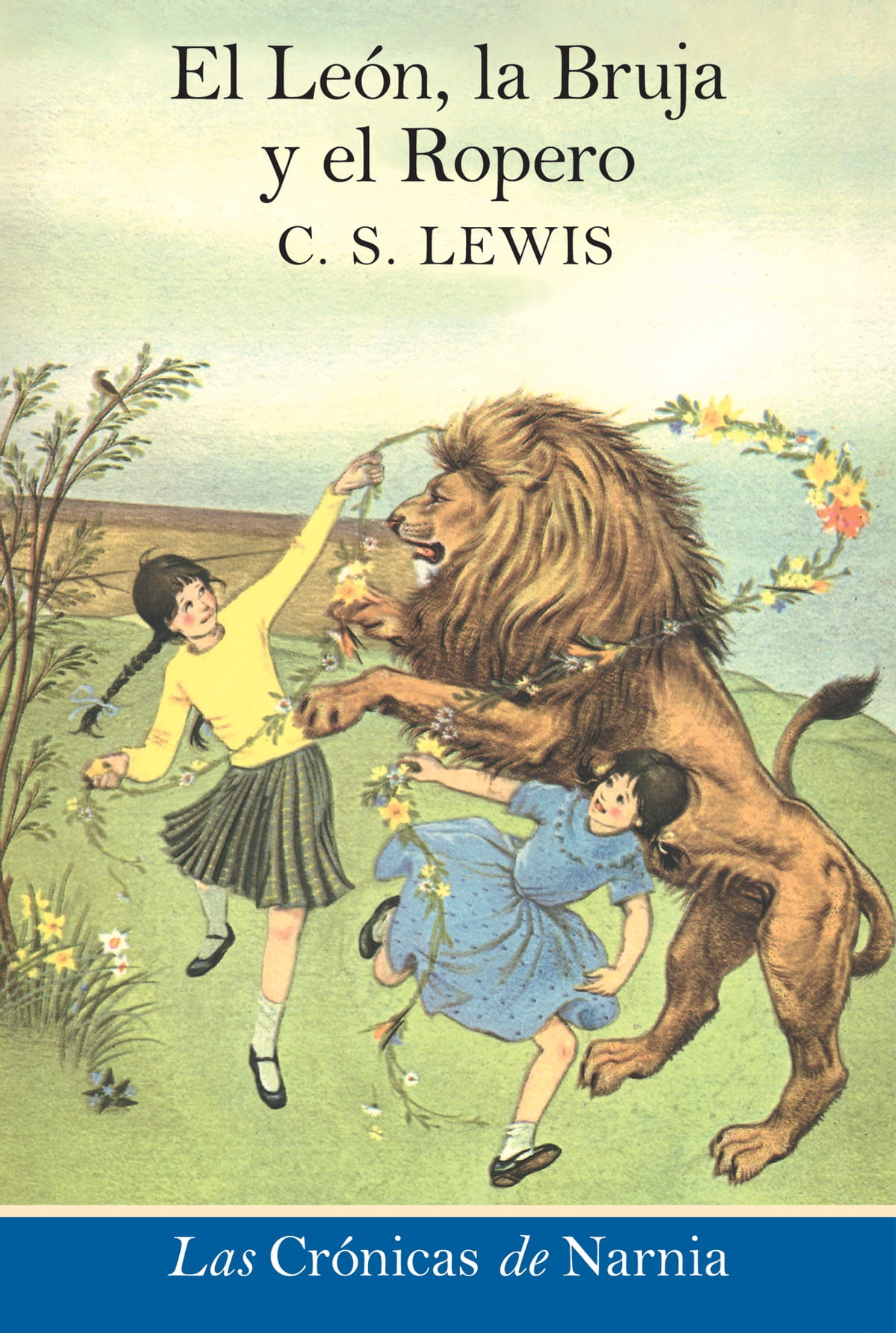Last week I finished the first half of CS Lewis’s “El León, La Bruja,y El Ropero” (or the “The Lion, the Witch, and the Wardrobe) in Español from the Chronicles of Narnia series.
In this most recently school year, I taught the English version of the book to our third graders using the books and study guides from Memoria Press, so the material is still fairly fresh in my mind. I also went through any difficult or unusual vocabulary rather thoroughly with my students. We had an awesome Narnia party to celebrate finishing the books, quizzes, and study guides (and I let them watch the Disney version of the movie).
I was at the Los Altos Library with my kids last week and happened upon a Spanish copy that appeared to have never been read. I took it home and read the first chapter realizing that this was likely about my Spanish reading level. In an effort to improve my Spanish, I recently tried listening to Harry Potter y la Piedra Filosofal, but found it too difficult to keep up with unless I paused and replayed the material pretty often. I then tried to a paperback version and I made some good progress, but got busy and set it aside.
Developing My Spanish Fluency
Even after completing four years of Spanish in high school (and passing the AP test!), taking and passing several college-level courses, going on mission trips to Mexico, and utilizing various language-learning apps like Duolingo, Babel, Pimsleur, and self-paced textbooks, I still haven’t reached a fluent level in Spanish. Much of it is probably my fault by not staying consistent and taking month long or more breaks between study. Often getting burnt out by lack or progress or bogged down in some obscure conjugations. I tend to work on my Spanish hobby in spurts, which isn’t really great for language development. But I also think that I am not a very good student. School was always fairly easy for me and I never really developed good study habits. I am a frequent procrastinator and poor study planner. I think I have learned more about study skills in the last few years of teaching elementary school. Winging it was often sufficient, but it made me weak student.
I remarked to one of our classroom teachers just yesterday that I wish I could go back in time and start my education career with the habits I now require of my students. Using a planner, scheduling study time, making flash cards, review sessions, etc. I did none of this all throughout my academic career and wish I had!
Learning by Reading
I also had a narrow view of the tools available for learning a language. In my mind, I needed to reach some level before I could try directly reading material in Spanish. I imagined my grammar wouldn’t be good enough. But I started listening to a few simple podcasts from the babel app and was able to follow just fine even if I couldn’t reconstruct them on my own. Then I listened to a few youtube videos by polyglots that recommended reading directly and picked up a few children’s books and my confidence shot up. You have to be comfortable with a little context based translation, but you can get the jist of it most of the time.
Two big benefits I’ve seen are 1) Vocabulary Expansion: Reading exposes you to a wide range of vocabulary words and phrases. By encountering new words in context, you learn their meaning and usage more effectively than simply memorizing word lists. This expands your vocabulary and allows you to express yourself more precisely in Spanish.
And 2) Grammar and Sentence Structure: Through reading, you encounter different grammatical structures and sentence patterns. You develop a better understanding of how sentences are constructed, which improves your ability to form grammatically correct sentences and write with greater accuracy. This has been very helpful in Spanish especially with its reflexive verbs and adjective ordering.
By Jove Localization
Once Peter Pevensie (or Pedro in the Spanish version) arrives in Narnia, he expresses his sense of surprise with the phrase: “By Jove!” It is an old-fashioned phrase that calls back to Jupiter. “Jove” is another name for the Roman god Jupiter, who was considered the king of the gods. In this expression, “By Jove” is essentially an oath or exclamation invoking the power or authority of Jupiter. However, in modern usage, it is more of a quaint or humorous way to express surprise or admiration. In the Spanish text, they swapped out the phrase for “¡Dios Mio!” or “My God!” as a type of localization.
Localization in translation refers to the process of adapting a product, service, or content to a specific target audience or market, considering cultural, linguistic, and regional differences. It goes beyond a simple word-for-word translation and involves modifying various elements to make them culturally and contextually appropriate for the target audience.
I thought this was an interesting localization since Roman (and therefore Latin) Jupiter is not necessary English, but this Latin cultural capital had made its way into an English idiom in a way that wouldn’t be translated into a Latin-based language like Spanish. After all, “Por Jupiter” would not really have the same meaning, even though it would the most literal translation.
As an aside, my wife loved the board game “By Jove” and purchased an classic version of the game for our kids.

Leave a ReplyCancel reply